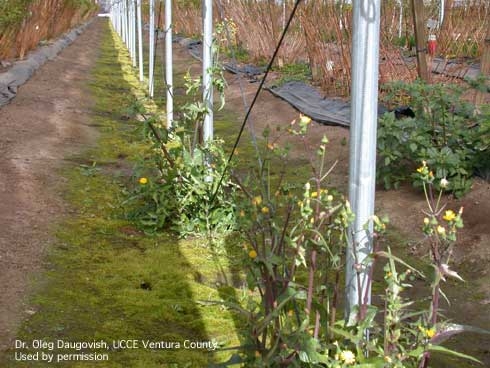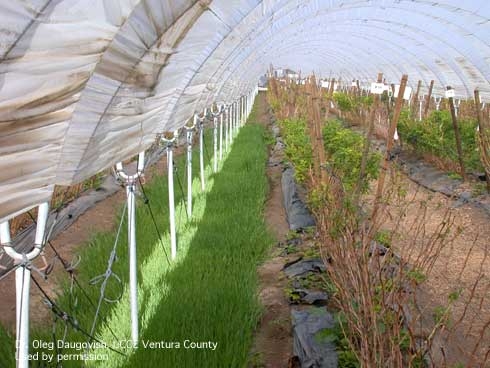A cover crop can be a useful way to prevent weeds in anchor rows.
Cover crops in anchor rows can suppress weed growth and additionally help to minimize soil erosion and nutrient and sediment loss when it rains. Densely planted cover crops can outcompete weed seedlings germinating from the soil and prevent wind-dispersed seeds from reaching the wet soil surface. Have a look at the newly revised weed section in the Caneberries Pest Management Guidelines on the UC IPM web site.
As readers know, tunnels used for caneberry cultivation have the advantage that even when it rains caneberries remain dry which helps with fruit quality and yield. However, during rains, the water drains from the plastic cover of the tunnel and down into rows that contain the anchoring posts of the tunnel structure. The accelerated runoff in these post rows can cause soil erosion, sediment and nutrient loss. As such, the persistent soil moisture in post rows also promotes weed growth. These weeds, while maybe not competing directly with canes, can reproduce and quickly spread into neighboring cane rows.
Cover crops in the anchor rows are especially helpful when managing weeds that are difficult to control with fumigation because of their hard impermeable seed coats (mallows and filaree), or that have developed resistance to herbicides such as glyphosate and paraquat (hairy fleabane and horseweed).
Cover crops can be managed with mowing or herbicides to avoid seed production.
Attached Images:

